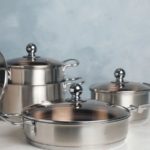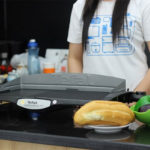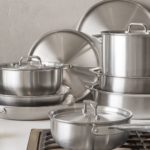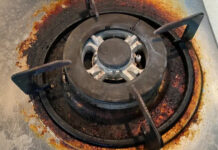Non-stick pans were introduced as a revolutionary step in “liberating” homemakers. But in the past, we used to fry with aluminum and cast iron pans that were not non-stick, and the food was still delicious. Nowadays, even non-stick pans can become sticky. Moreover, using non-stick pans excessively is not good because at high temperatures they can break down into substances that are more harmful to health than regular pans.
Therefore, don’t rely solely on non-stick pans, try the following methods:
Use banana leaves to line the pan.
A good way to prevent food from sticking to the pan and to avoid splattering oil while frying is to use a piece of dried banana leaf to line the bottom of the pan, then pour oil and heat the oil before placing the food to be fried.

Why banana leaves? Because banana leaves are one of the most common and easily-sized leaves. Especially, thick banana leaves do not burn quickly when added to hot oil. Banana leaves also do not mix with the smell of food. On the other hand, if you use other leaves, they may become mushy or have a leafy smell that affects the taste of the food. Moreover, banana leaves have excellent antioxidant properties, so when used to line the pan, they help the food absorb additional antioxidants from the leaves. Banana leaves are very smooth, so when you drop food like fish, shrimp, meat, betel leaf rolls, or nem into the pan, the banana leaves will not stick to the food. Whereas if you use other leaves, they may adhere to the food and create a layer on it.
Use alcohol or vinegar.
Rubbing wine or vinegar evenly on the surface of the pan when the pan is hot, then adding oil, will help the pan create an effective non-stick layer. A special note is that when not using a non-stick pan, the prerequisite is to heat the oil sufficiently before adding the food to be fried, especially for foods that are prone to sticking, such as tofu, nem, and fish. When the oil is hot enough and you add the food, they will quickly shrink and dry on the surface, the oil will stick faster and create a non-stick layer on the bottom.
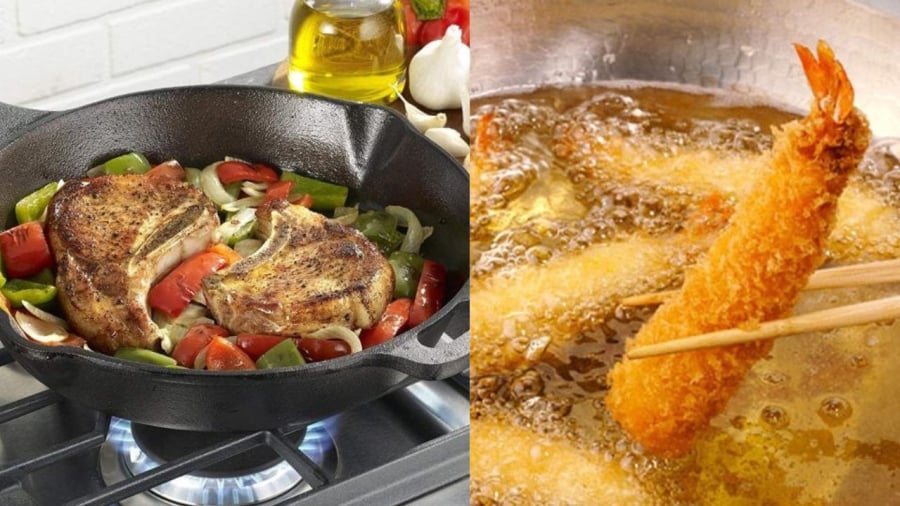
Use ginger.
Rubbing a layer of ginger around the bottom of the pan is also a secret to creating a natural non-stick layer. Ginger and fat form a smooth layer that makes the pan smoother and shinier. And of course, you also need to remember to heat the oil properly before adding the fried food.
Use cornstarch.
You can sprinkle a little cornstarch or tapioca starch evenly on fish, nem, beans, or add it to the hot oil in the pan. The purpose of using this powder is to absorb water and prevent oil splatter. Along with creating a quick coating around the fried food, so it doesn’t stick to the pan anymore. It is better to use cornstarch or tapioca starch than flour.
Use beaten egg as a primer.
To create a natural non-stick layer, you can heat the pan, add oil, and fry an egg first. Then, you can use the pan to fry other dishes, which will help reduce sticking.
Notes on preparing food when not using a non-stick pan
Whether you use a non-stick pan or not, you should also pay attention to the following steps to prevent oil splatter or sticking to the pan when frying. When not using a non-stick pan, you need to pay more attention:
Keep the ingredients dry, use absorbent paper. Because if the food has water when you put it in the oil pan, it will splatter oil and decrease the heat in the oil pan, making it more sticky.
Always heat the fat oil, only then add the food to be fried. And you should fry until it is golden before turning it over, if you turn it over too early, it will stick to the pan. To know if the oil is hot enough, you can dip a cooking chopstick into the oil. If it makes a strong sizzling sound, it means the oil is hot enough. If the oil is too hot and smokes, it will burn and be harmful to food.

























